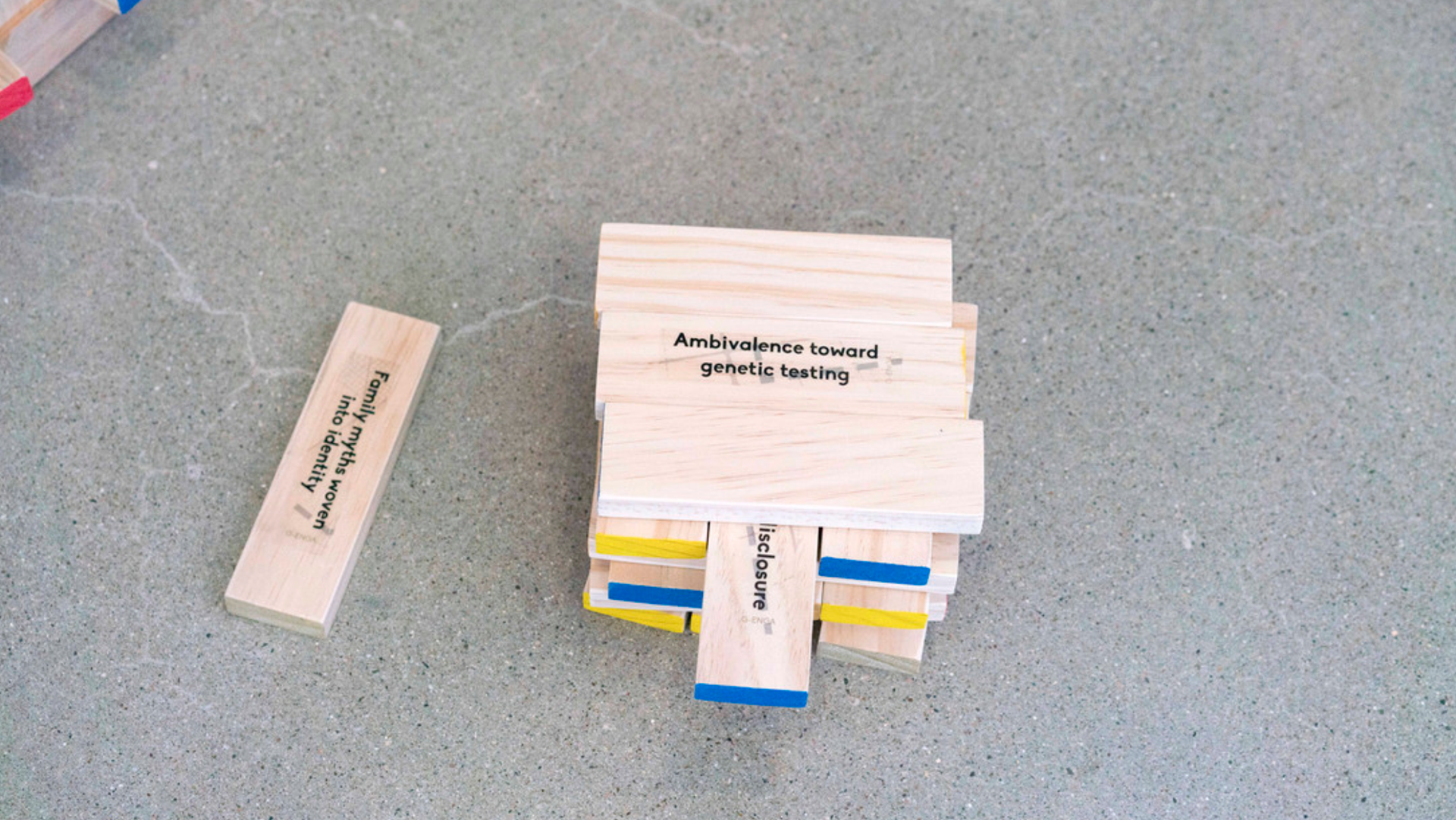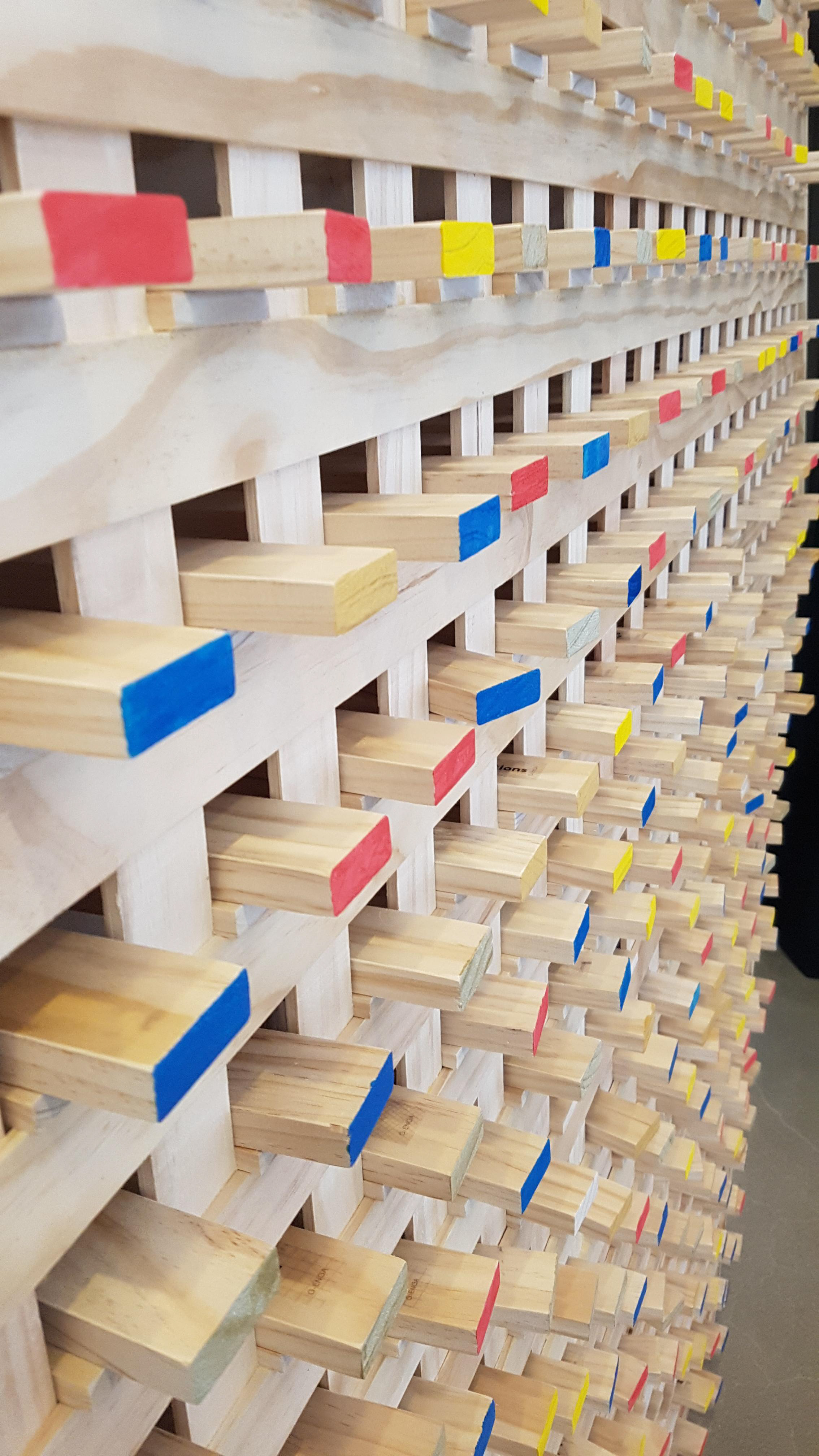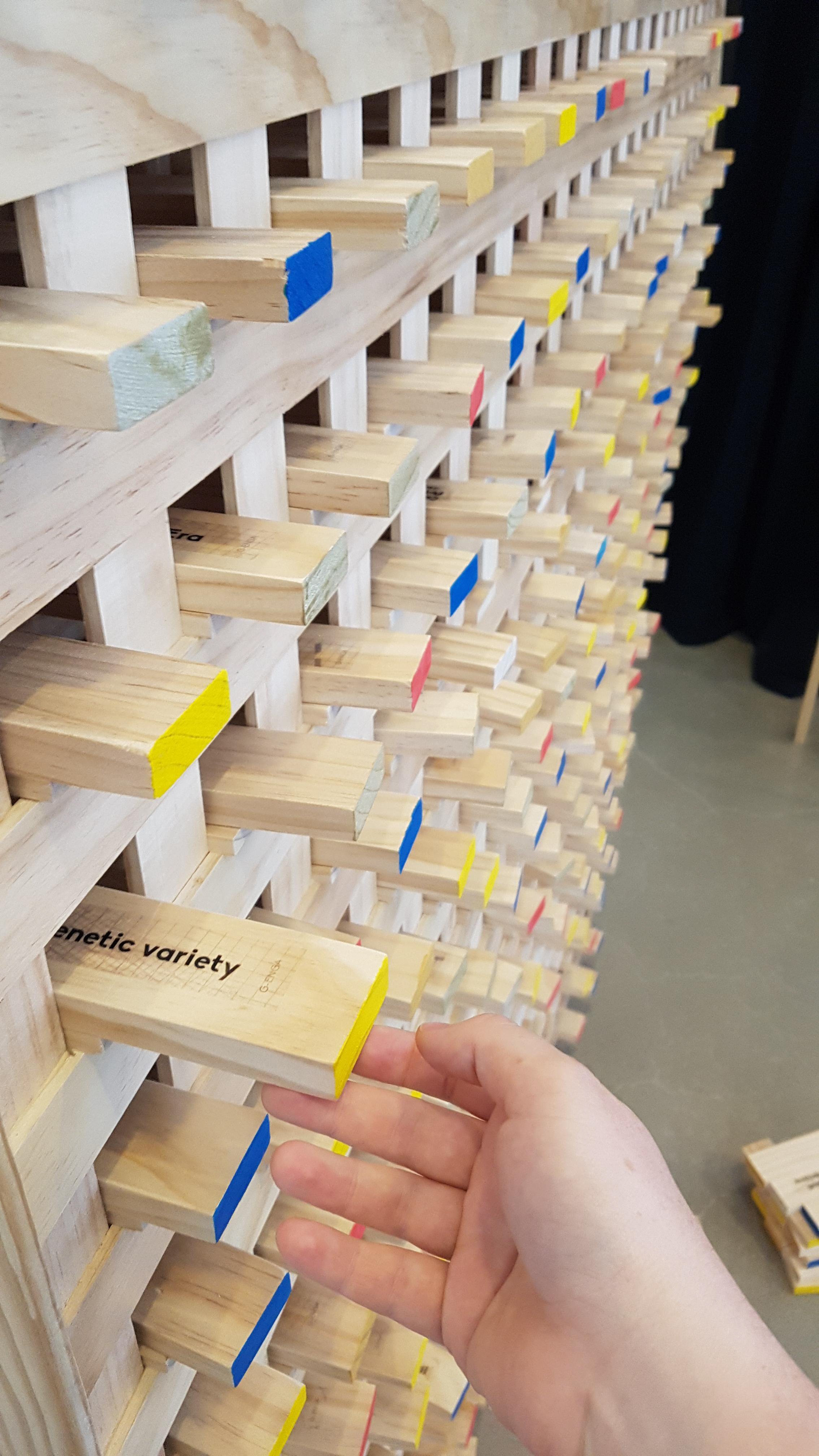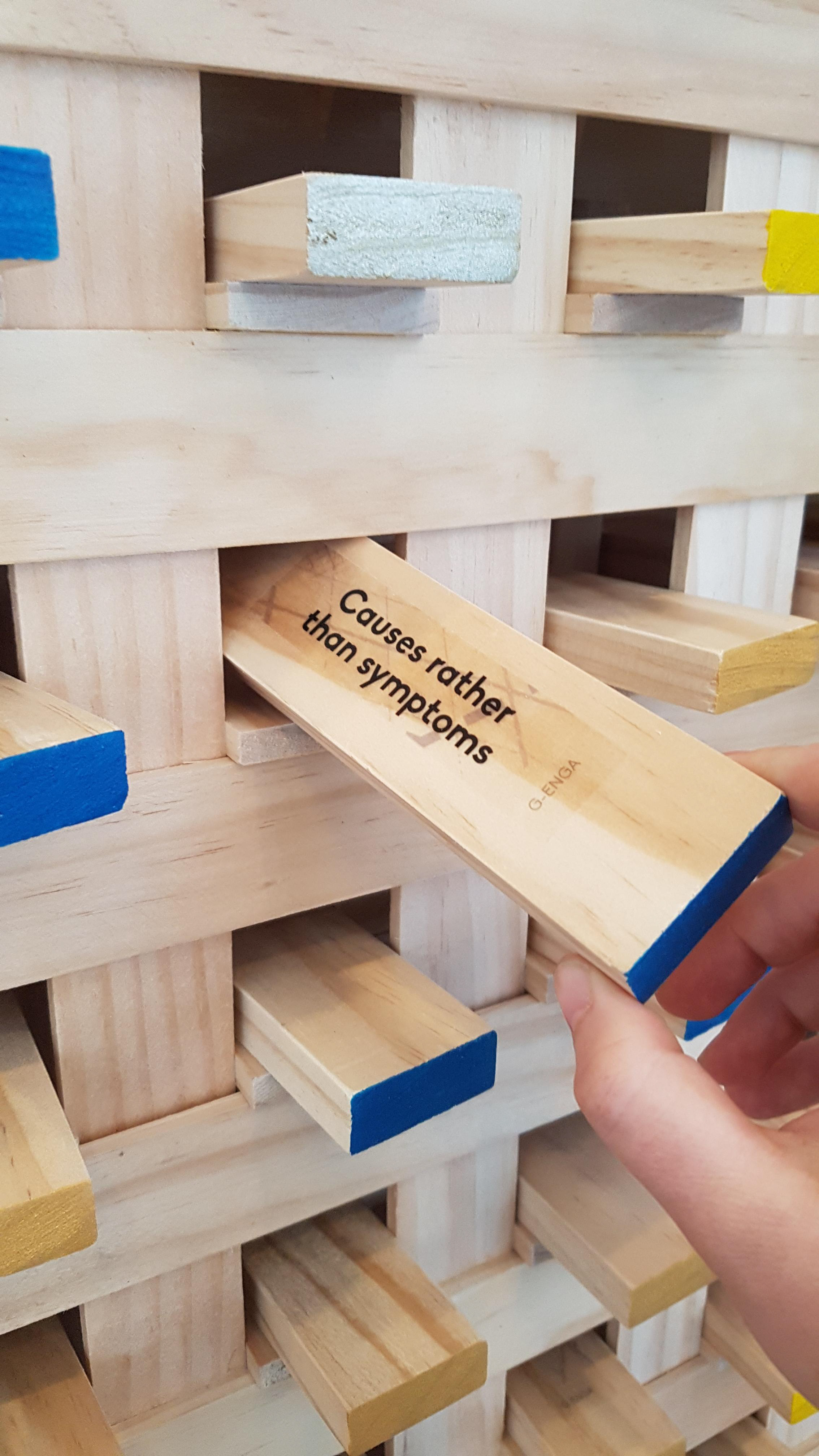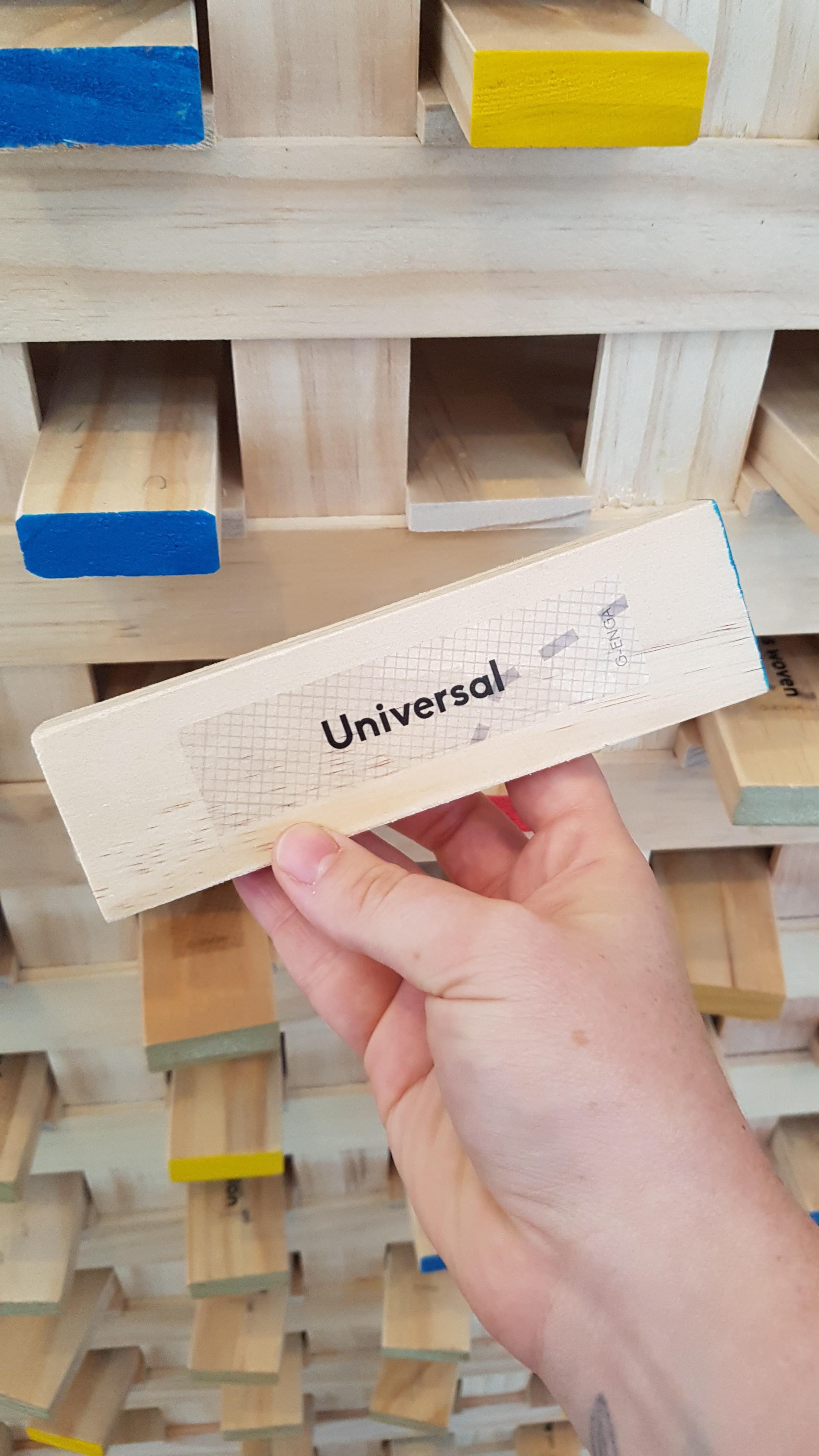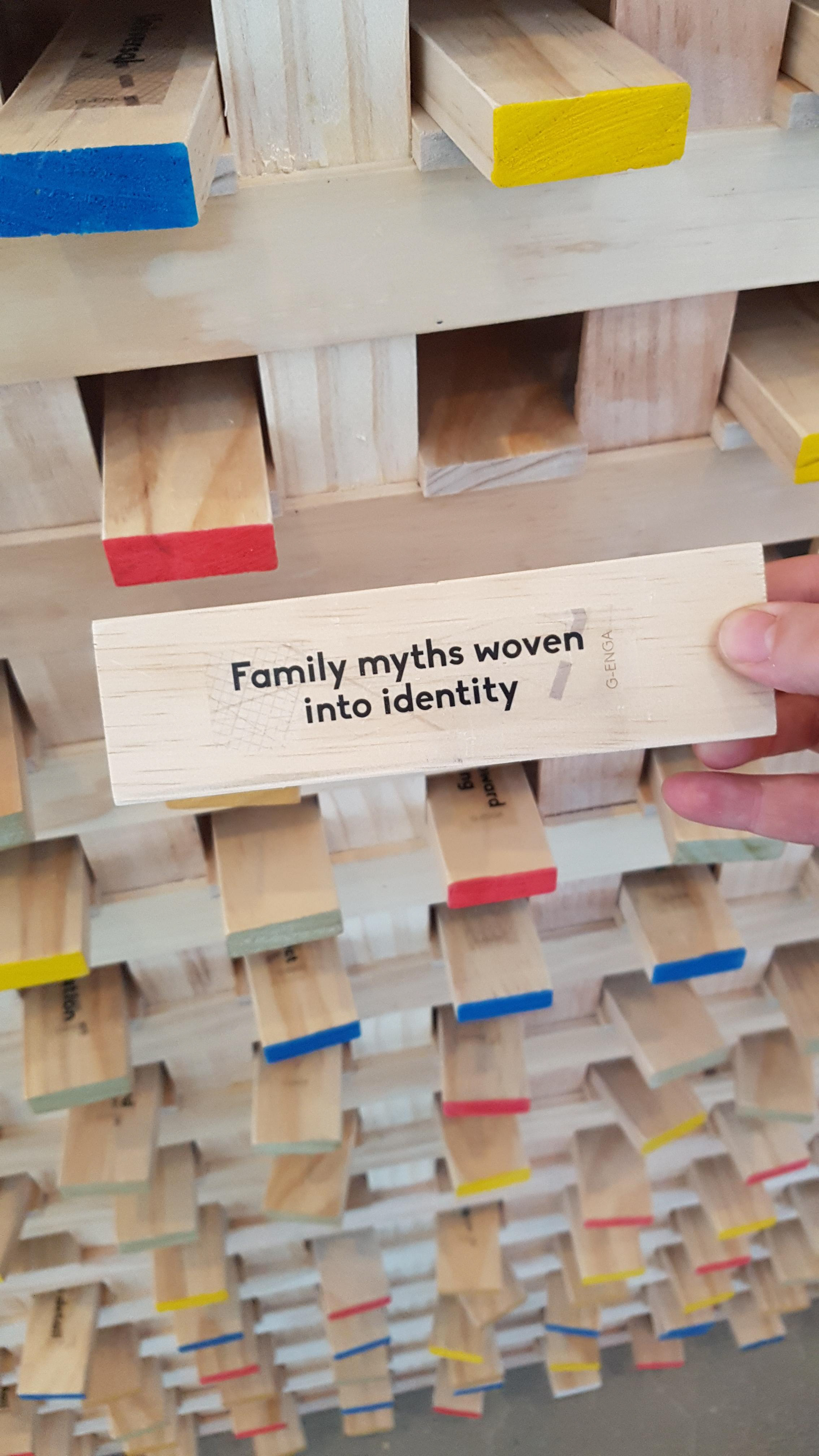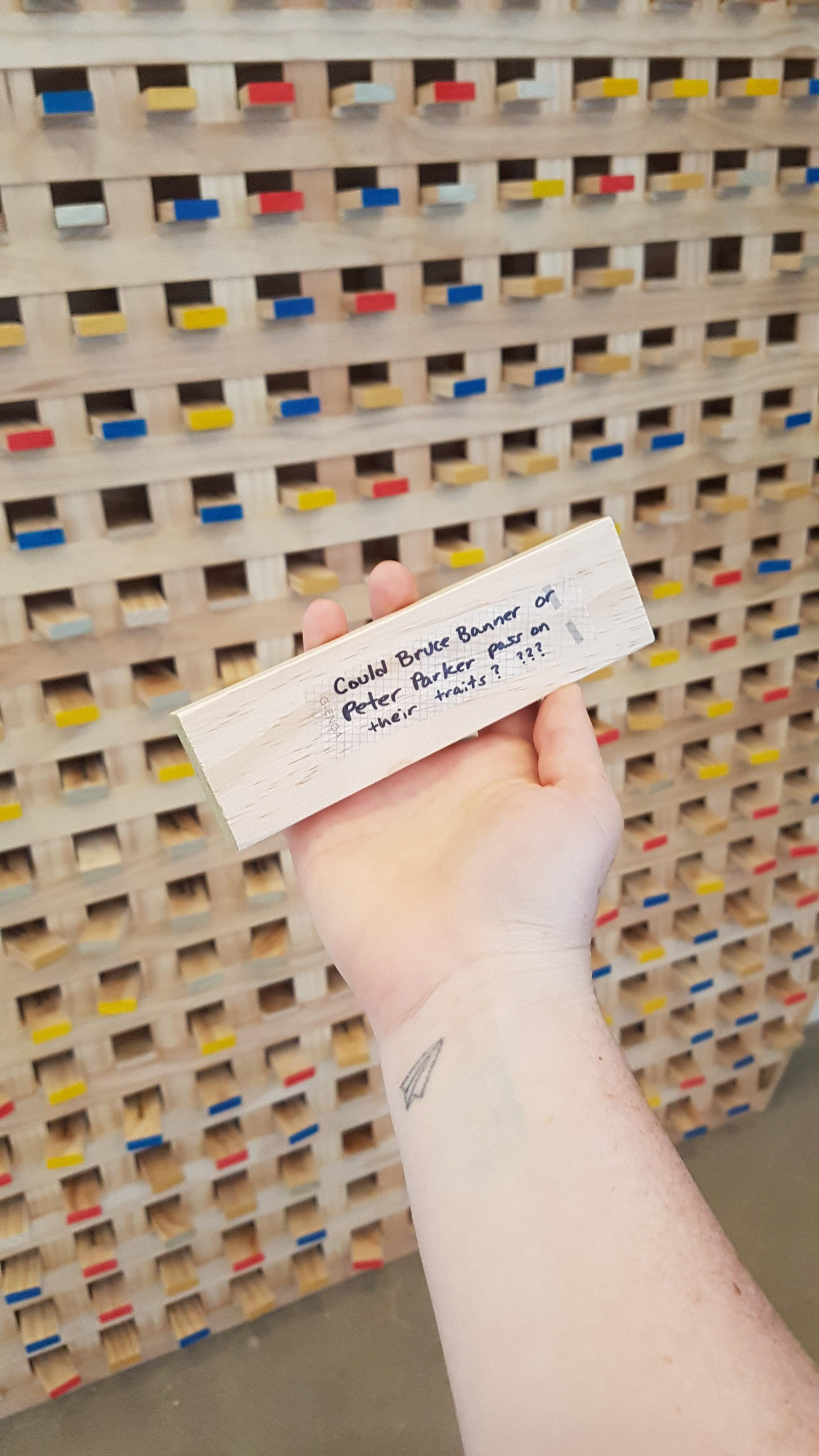G-enga is an interactive sculpture inspired by the game Jenga and by the Rosetta Stone. It uses interactivity and play to familiarize visitors with the human genome. As the Rosetta Stone has done for language, genomic research has been done for deciphering DNA code and as a result human connections. Visitors can arrange any number of the 550 large wooden pegs that either contain phrases, questions, concerns, and facts about the genome. They can also contribute their thoughts and questions on the human genome by filling out blank pegs. https://www.rochesterartcenter.org/copy-of-2023-exhibitions
The sculpture was commissioned by the Rochester Art Center Curator for the opening of the Smithsonian exhibition "Genome: Unlocking Life's Code" in 2018 and through funding by Mayo Clinic.
"The exhibition, which first debuted at the National Museum of Natural History, uses interactive displays, animations and 3-D models to explore how breakthroughs in genomics are influencing people's daily lives and the impact they are having on science, medicine and nature.
Dr. Timothy, education program director at the Mayo Clinic Center for Individualized Medicine, which is sponsoring the exhibition, said the goal is to offer an engaging, interactive and educational experience that demonstrates the importance of genomics research.
To complement the Smithsonian exhibition, the Rochester Art Center is curating a series of locally-produced exhibits that fuse art and science to examine the importance of the genome in contemporary society. Artists participating include Eric Anderson, Shah Noor Shafqa and Zoe Cinel."
Read the full article at: https://www.medcitybeat.com/news-blog/2018/genome-unlocking-lifes-code-art-center#gsc.tab=0

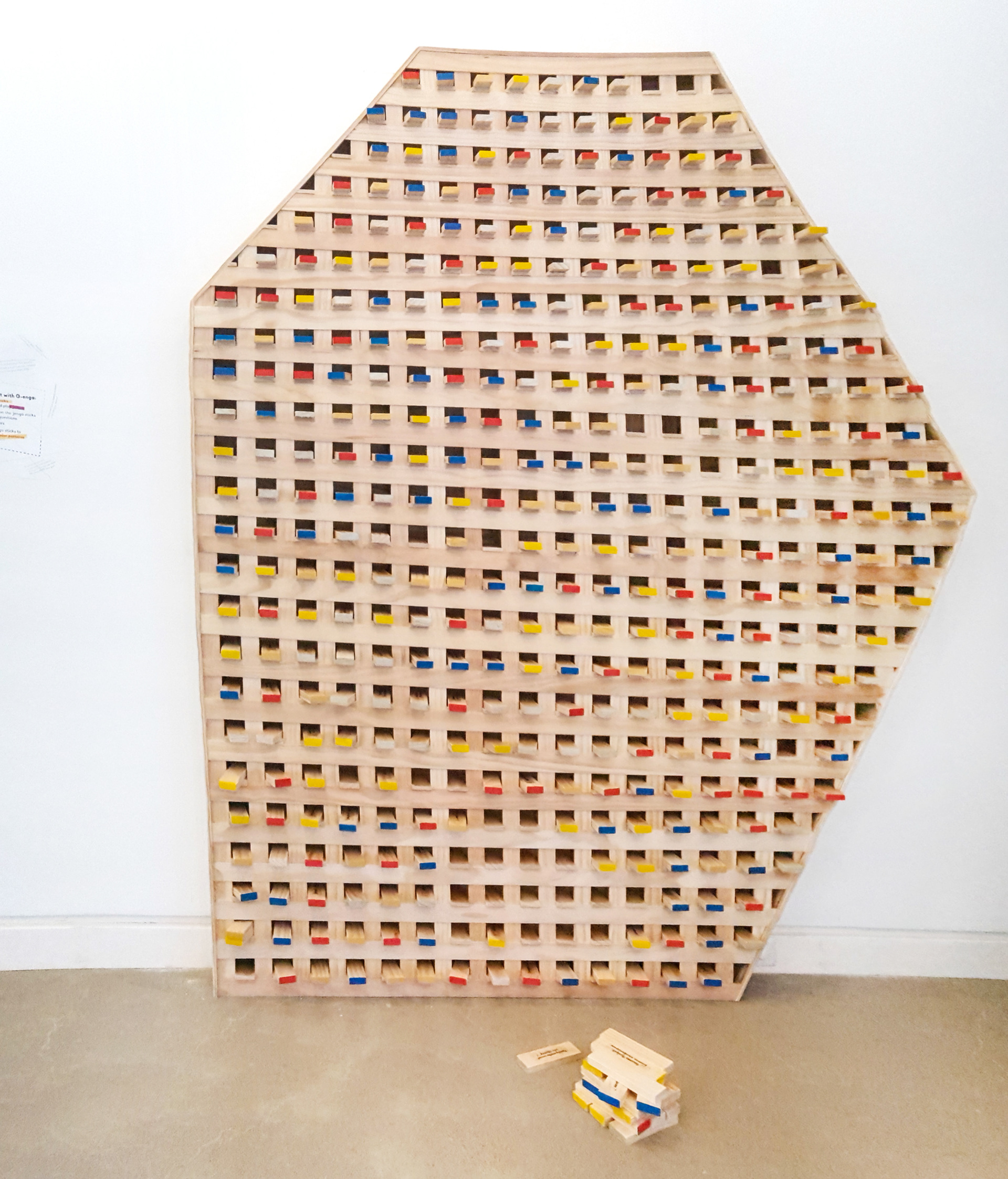
A light wood sculpture stands in front of a white wall with white trim at the bottom on a grey cement floor. The sculpture is shaped as an irregular hexagon and it is inspired by the shape of the monument Rosetta Stone. The facade of the sculpture is hollow and covered by a grid of light wood strips leaving holes or shelves in the facade. In the holes are pegs with edges painted in yellow, blue and red.
